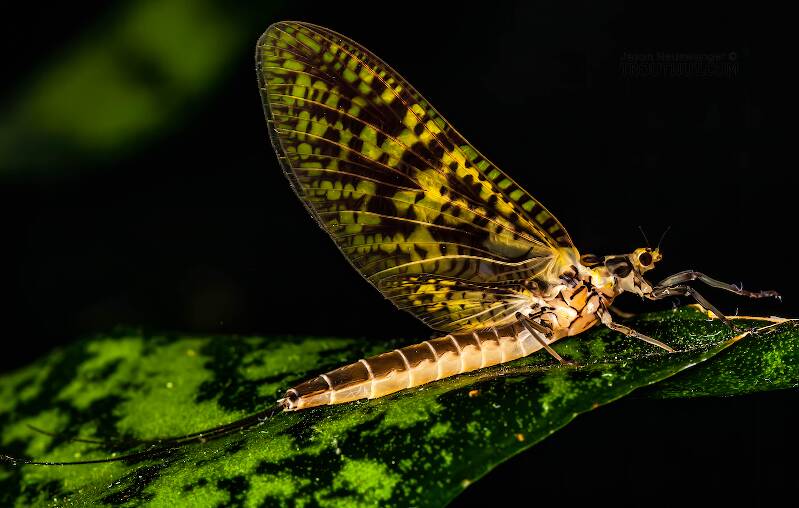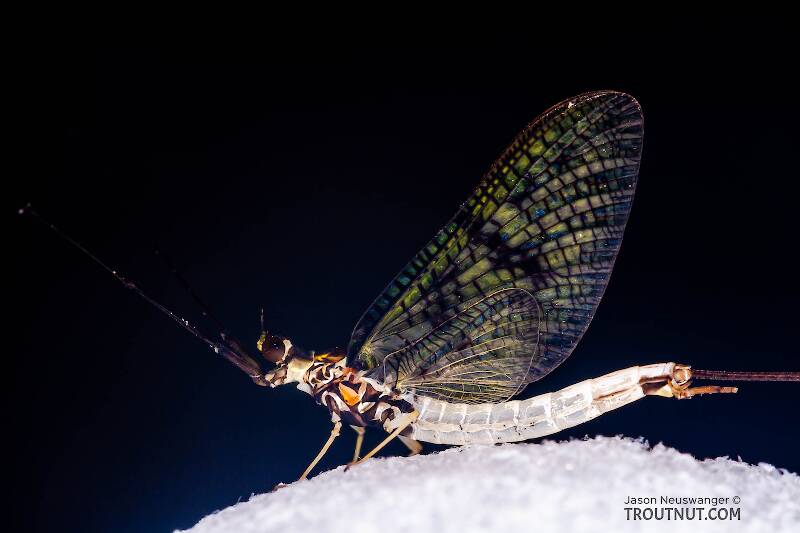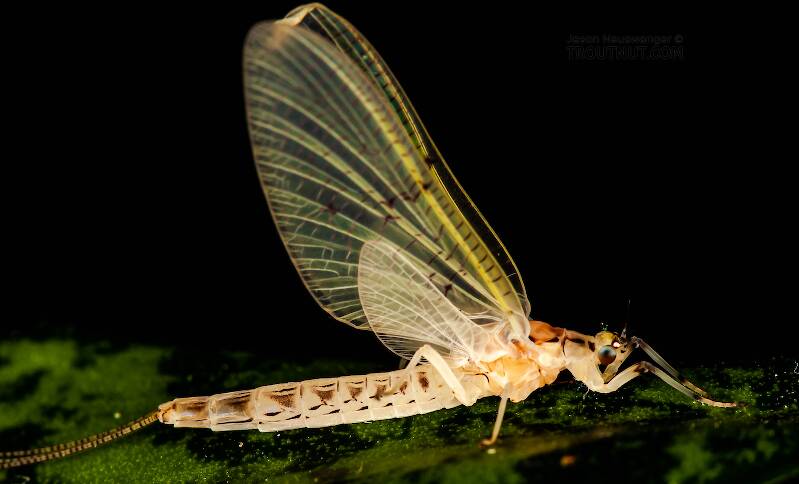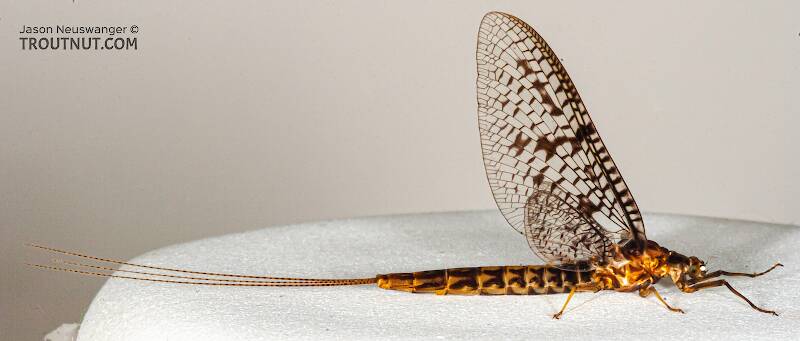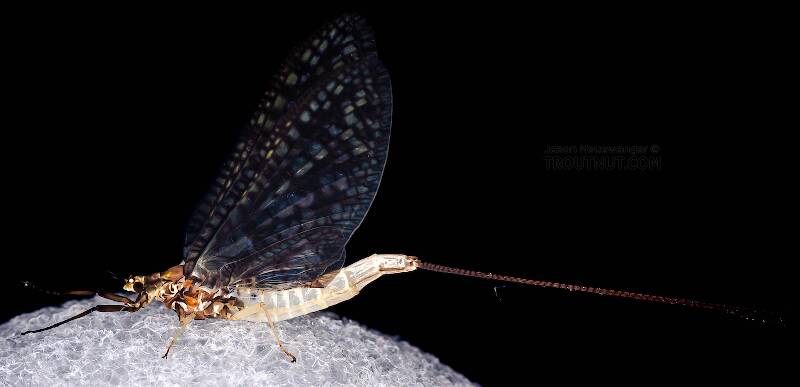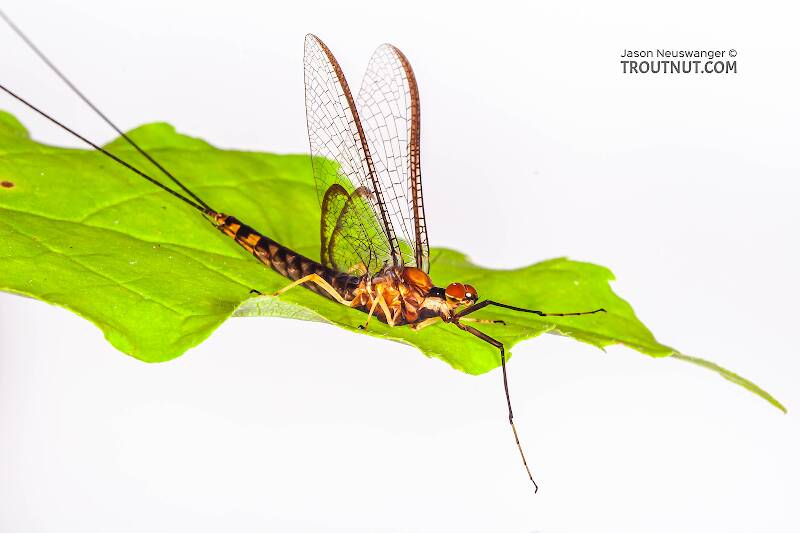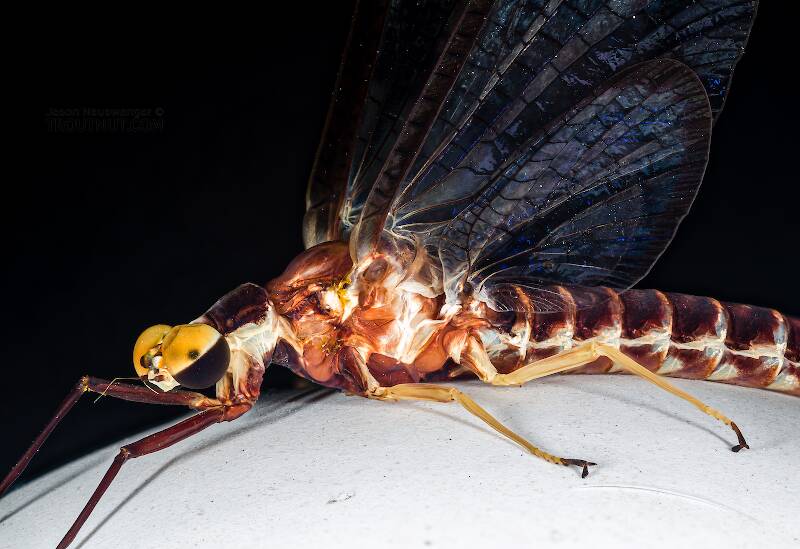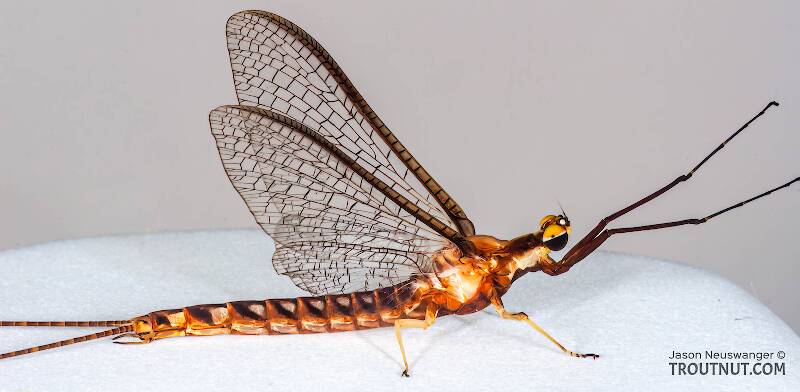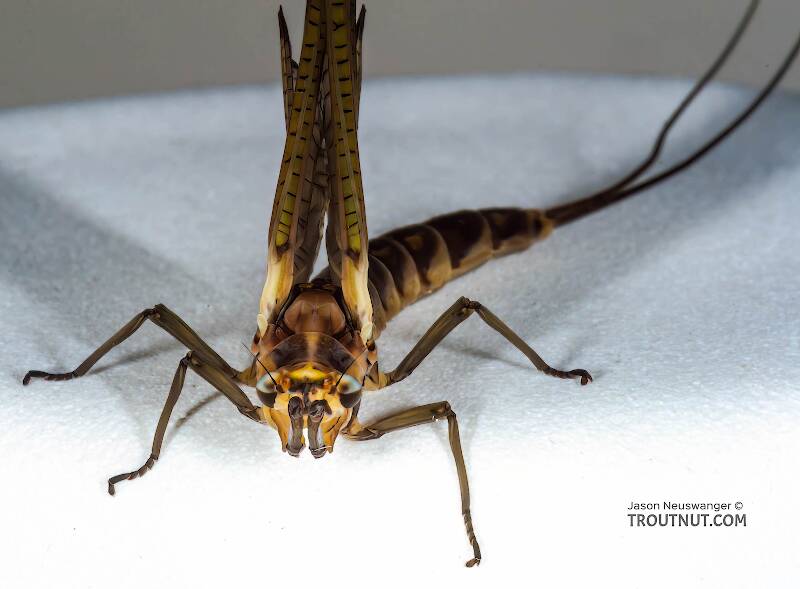
Salmonflies
Pteronarcys californica
The giant Salmonflies of the Western mountains are legendary for their proclivity to elicit consistent dry-fly action and ferocious strikes.
Featured on the forum

This dun emerged from a mature nymph on my desk. Unfortunately its wings didn't perfectly dry out.

Troutnut is a project started in 2003 by salmonid ecologist Jason "Troutnut" Neuswanger to help anglers and
fly tyers unabashedly embrace the entomological side of the sport. Learn more about Troutnut or
support the project for an enhanced experience here.
Identification: Key to Genera of Ephemeridae Duns and Spinners
Identification: Key to Genera of Ephemeridae Duns and Spinners
Error: Tried to access a key that isn't live.
Adapted from Merritt R.W., Cummins, K.W., and Berg, M.B. (2019)
This couplet refers figures (usually designated 'sf') from this source.
You will need the source (make sure to get the same edition!) to see them.
This couplet refers figures (usually designated 'sf') from this source.
You will need the source (make sure to get the same edition!) to see them.
| Option 1 | Option 2 |
|---|---|
| Three tails (i.e., terminal filament subequal to cerci) | Two main tails (i.e., terminal filament vestigial or clearly shorter than cerci) |
Forewings, and sometimes hind wings, prominently mottled with dark markings 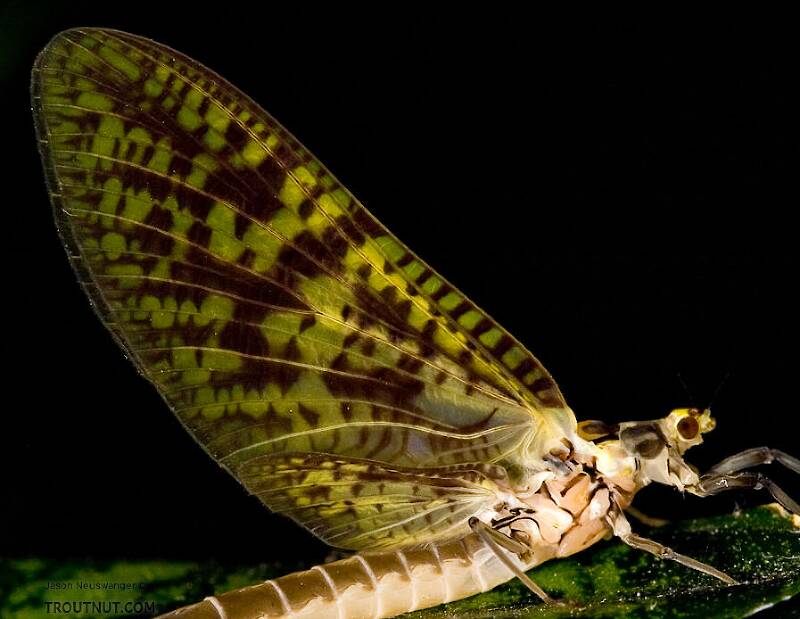
| Forewings and hingwings not prominently mottled, but may be shaded along margins 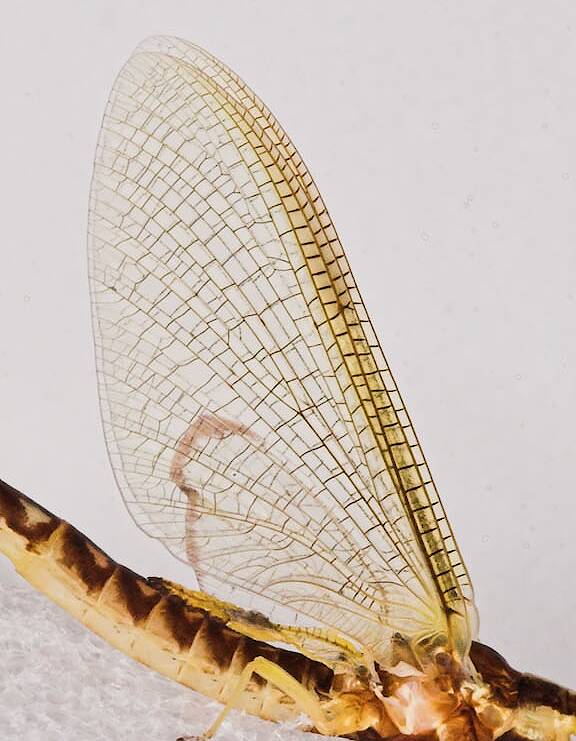
|
| Crossveins of forewings near bullae crowded together (source fig 13.168a) | Crossveins of forewings near bullae not crowded together |
| Remaining genera: Hexagenia and Litobrancha | |
5 Example Specimens | 5 Example Specimens |
| Ephemera | Go to Couplet 2 |
Adapted from Merritt R.W., Cummins, K.W., and Berg, M.B. (2019)
The current couplet is highlighted with darker colors and a icon, and couplets leading to this point have a icon.
Couplet 1 (You are here)
Leads to Ephemera:
- Three tails (i.e., terminal filament subequal to cerci)
- Forewings, and sometimes hind wings, prominently mottled with dark markings
- Crossveins of forewings near bullae crowded together (source fig 13.168a)
Leads to Couplet 2:
- Two main tails (i.e., terminal filament vestigial or clearly shorter than cerci)
- Forewings and hingwings not prominently mottled, but may be shaded along margins
- Crossveins of forewings near bullae not crowded together
Couplet 2
Leads to Litobrancha
(Litobrancha recurvata):
(Litobrancha recurvata):
- Head with frons greatly expanded below compound eyes (source fig 13.251)
- Wing membranes tinted amber or purplish brown
- Male penes recurved ventrally (source fig 13.250)
Start a Discussion of this Couplet
References
- Merritt R.W., Cummins, K.W., and Berg, M.B. 2019. An Introduction to the Aquatic Insects of North America (Fifth Edition). Kendall/Hunt Publishing Company.


